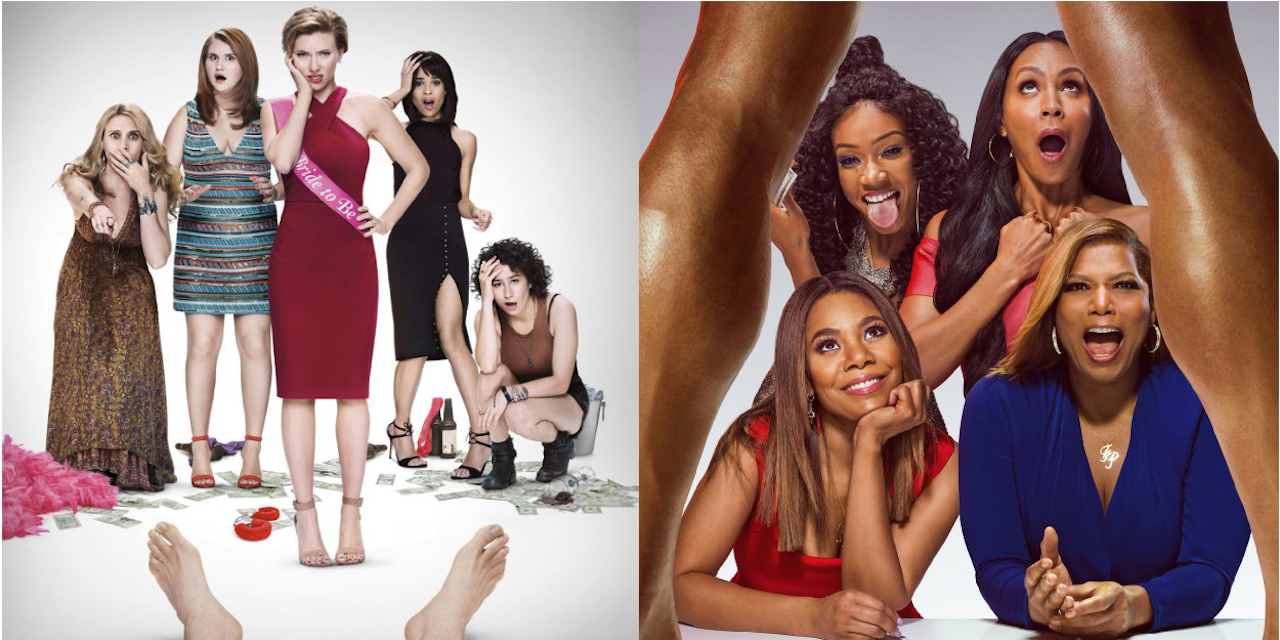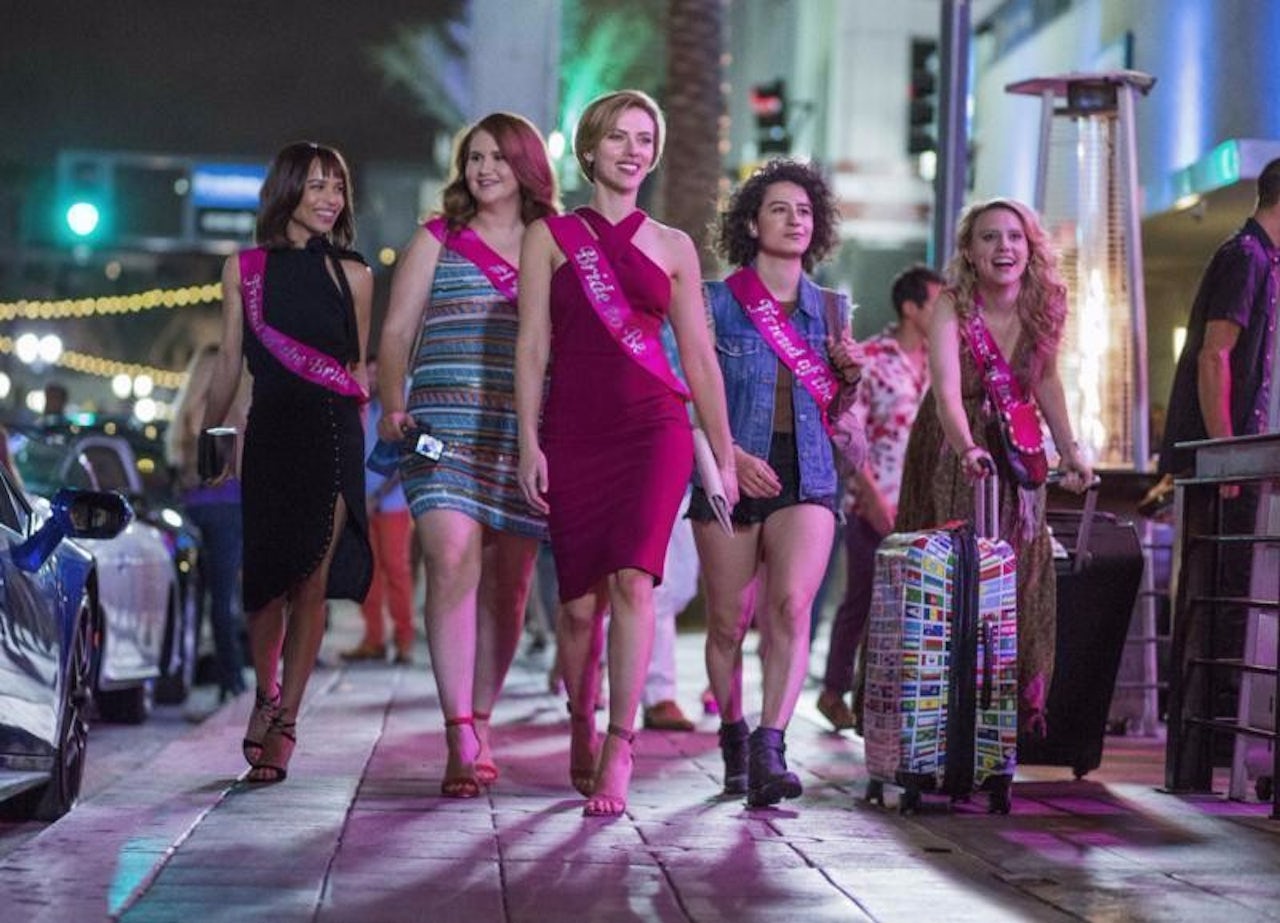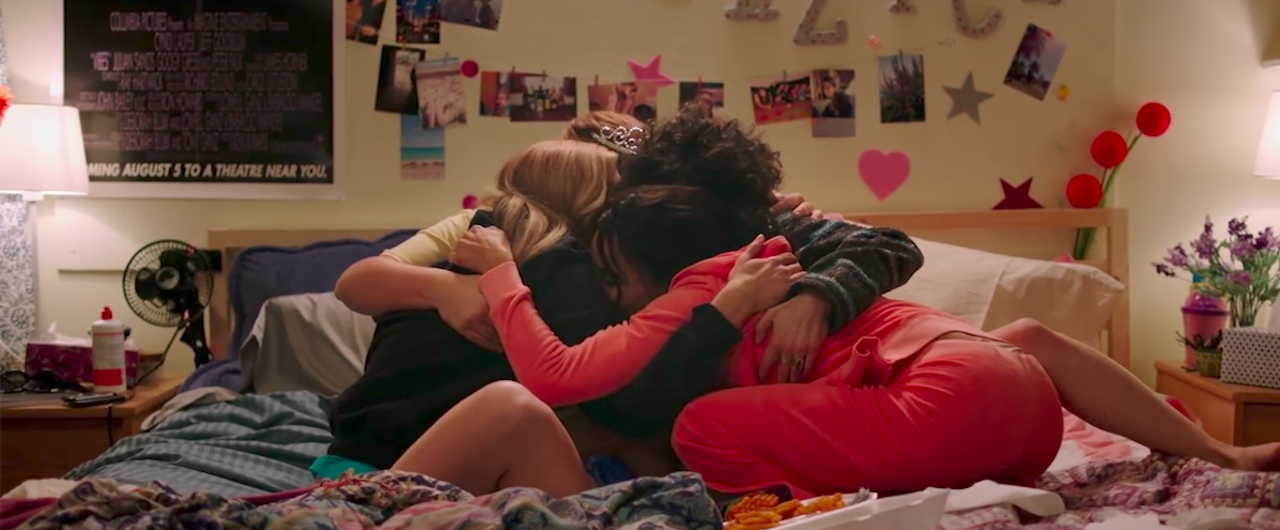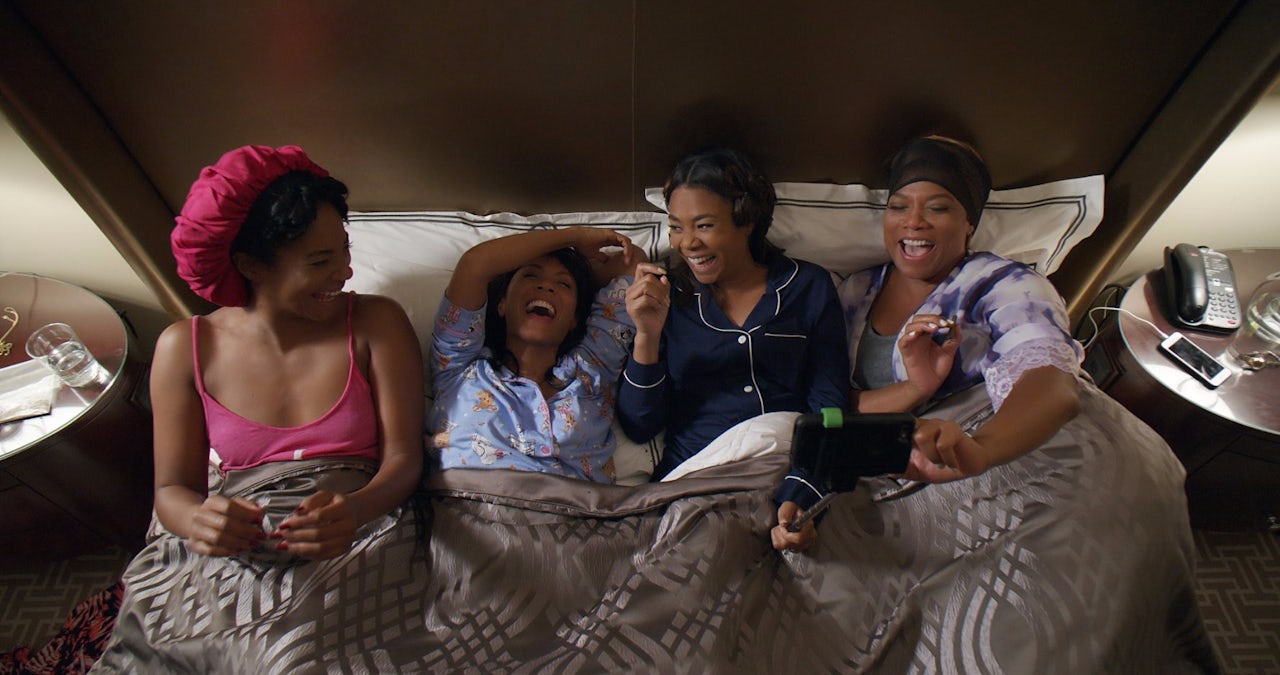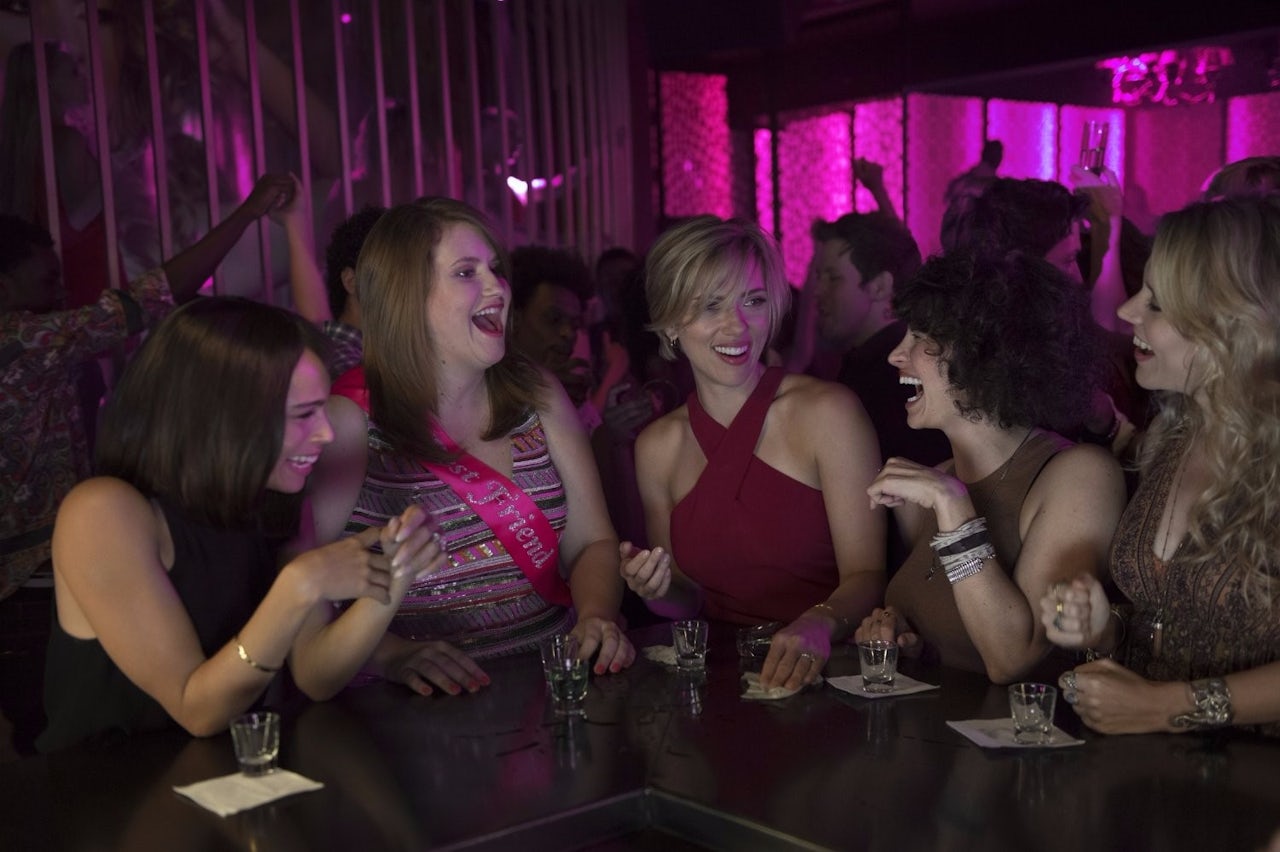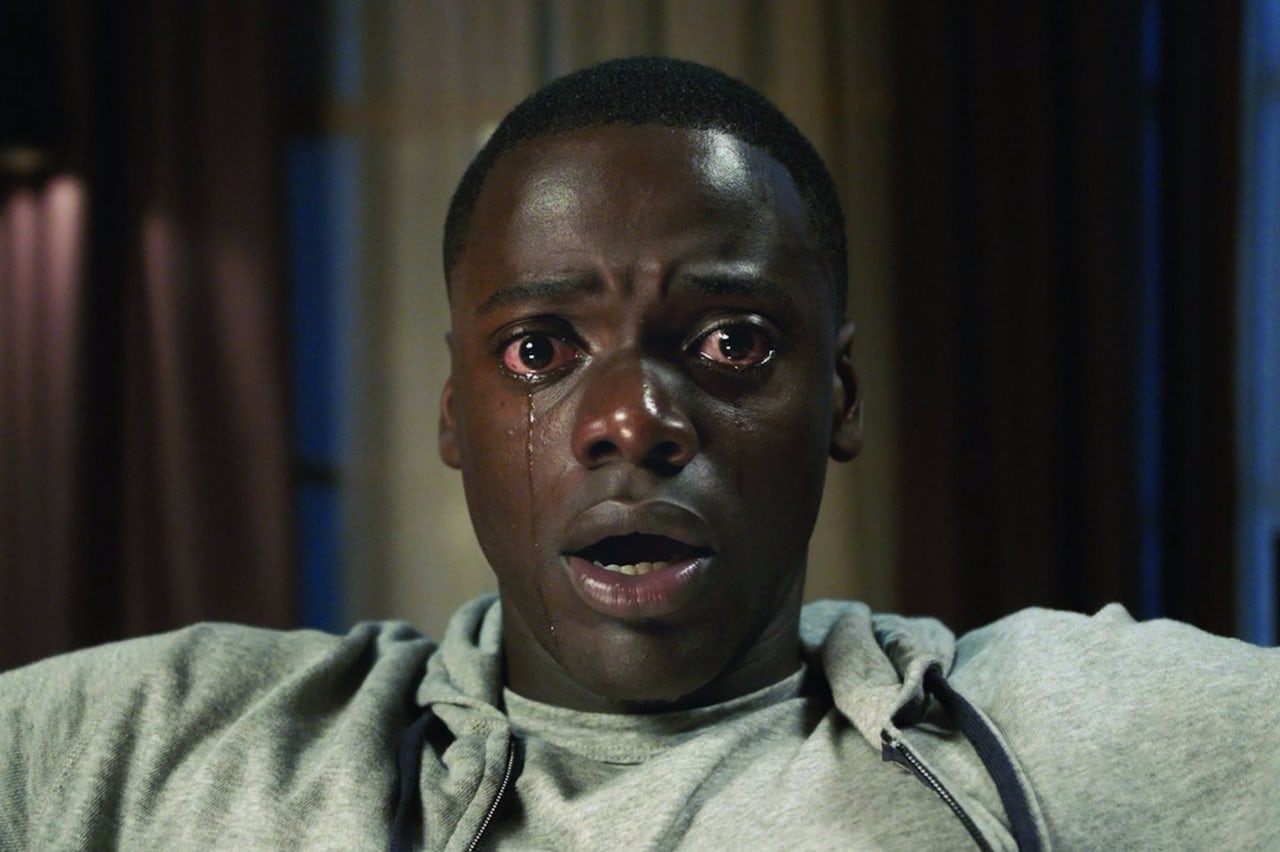When you get to be a woman of a certain age, maybe with children and a partner and a career, and especially with all three, you give up your right to friendship and to fun. And then once every few years, you go on a weekend trip with the girlfriends you otherwise no longer have time for, knock back some Mang-o-ritas, and wild the hell out. That’s according to Hollywood, anyway, where women can never quite have it all. This summer, two major movies with that basic premise are coming to theaters within just a few weeks of each other: On June 16, Sony will release Rough Night, the first R-rated comedy to be directed by a woman, Lucia Aniello of Broad City, in 20 years. And on July 21, Universal will release Girls Trip, directed by Malcolm D. Lee.
One takes place in Miami and the other in New Orleans. One is about a group of girlfriends who met in college and the other is about a group of girlfriends who met much earlier in life. One deals with the death of a stripper (the punchline to a joke about an overweight woman) and the other with the death of a marriage. But aside from those sorts of plot differences, Rough Night and Girls Trip seem remarkably similar to each other. That is, except for one significant detail, easily gleaned from the trailers and promo for both: one is white and the other is black.
The white one, Rough Night, stars Scarlett Johansson, Kate McKinnon, Jillian Bell, Ilana Glazer, and Zoë Kravitz, who is typecast yet again as a beautiful token black girl. It seems pretty… rough. The black one, Girls Trip, stars Regina Hall, Queen Latifah, Jada Pinkett Smith, and Tiffany Haddish. It seems slightly less rough, if only for the absence of McKinnon’s open mic night-bad Australian accent.
Presumably because Google thinks it knows me, I began seeing ads for Girls Trip on YouTube a few weeks ago. But not long after, while watching something with my roommate, whose YouTube account is linked to our shared TV, a trailer for Rough Night popped up. “Did you know they’re making the same movie twice this summer?” she asked. We watched both trailers back-to-back and, sure enough, it would appear that Hollywood made one movie for white women who loved The Hangover and another one for black women who loved The Hangover.
Exhibit A
Exhibit B
Exhibit C
Exhibit D
Exhibit E
So, yeah, two similar movies. One seemingly white, one seemingly black. Why?
If it feels unfairly reductive to categorize movies as “white” or “black,” that’s because it is. The color line in Hollywood has been dissected and discussed for years, as has the idea that white audiences aren’t interested in attending movies they perceive as being “black.” According to one widely cited 2011 study, for example, it’s a “vicious cycle. ... Producers are hesitant to cast minorities in race-neutral romantic roles because of a fear that the white audience will perceive the films as ‘not for them,’ but white audiences perceive romantic films with minorities as ‘not for them’ because they seldom see minorities in race-neutral romantic roles.”
An audio version of this story was featured in our daily podcast, The Outline World Dispatch.
There are recent examples that suggest the contrary, or that are, at the very least, notable exceptions. Moonlight, Hidden Figures, and Get Out, all movies with black leads and black casts, were critical and commercial smashes over the past year. And there are not-so-recent examples, too. Films starring Will Smith, or Denzel Washington, or Eddie Murphy, resonated with national and international audiences for decades.
Conversations about race and representation in film and television have broadened, but an undeniable divide persists, as it does elsewhere in American life. Rough Night and Girls Trip feel like cheap proof of that cultural segregation, and also of the likelihood that Hollywood as an institution has run out of ideas.
